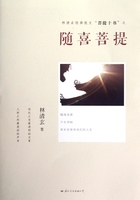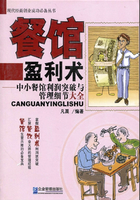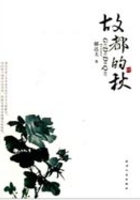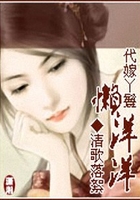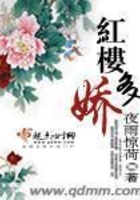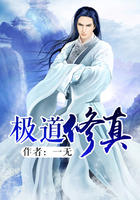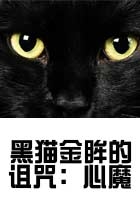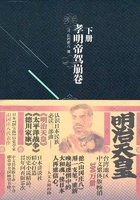What are the features of a Taoist temple?
A Daoist temple evolved from the traditional square-shaped Chinese courtyard. The main halls usually stand on the north-south axis, serving as places for people to worship the statues of Daoist gods and conduct Daoist ritual ceremonies.
During the Eastern Han Dynasty, when Daoist was born, Daoist ascetics mostly lived in huts and even caves in remote mountains. From the Jin Dynasty to the Northern and Southern Dynasties, Daoist experienced reforms, and many temples were set up in cities or even in the capital under imperial orders. During the Tang Dynasty, Daoist, Buddhism and Confucianism influenced one another, and thus Buddhist and Confucian architecture had a great influence on Daoist temple construction. As a result, Daoist temples resemble those of Buddhism and Confucianism in design and many other aspects.
Daoist architecture falls into two styles: traditional and bagua (八卦). The traditional style refers to a compound layout in which the main halls usually stand on a north-south axis and other buildings are on the two sides or at the back of the courtyard complex. The bagua style refers to that in which all buildings surround the danlu (丹炉), a stove to make elixirs. The south-north axis appears very long, and structures flank the axis. This style symbolizes the notion that human beings follow the Earth, the Earth follows the Heaven, the Heaven follows the Dao (道), and the Dao follow itself.
Notes:1)worship崇拜;2)conduct实施;3)ceremony礼仪;4)ascetic苦行者;5)design构思;6)layout布局;7)flank位于……的侧面(或两侧)
6.传统的村落布局的环境构造有什么特点?
What are the environmental features of the general layout of a traditional village?
A village is likely to be constructed in harmony with natural surroundings. Local villagers always highly appreciate trees, hills or streams nearby. In their mind, natural surroundings have been imbued with cosmic vitality and a sense of life.
In ancient times, the Chinese believed that the movements of the sun and moon affected spiritual currents that influenced people’s daily lives. This“cosmic breath”is known as Fengshui (wind and water). It is said that it was also affected by the form and size of hills and mountains, the height and shape of buildings, and the direction of roadways. Ancient people were aware of the importance of geomancy in the location and orientation of buildings and other structures.
An ideal location of a village should be in much conformity with the positions of the“Four Images”that are regarded as the lucky supernatural beasts. These are the Qanglong (青龙, the green dragon) that represents the east, the Zhuque (朱雀, the phoenix-like beast) the south, the Baihu (白虎, the white tiger) the west and the Xuanwu (玄武, the tortoise like beast with a snake winding round it) the north.
In accordance with the ideal environmental structure, the placement of a village generally observes one principle of“being situated at the foot of a hill and beside a stream (依山傍水)”where locals could cut woods in the hill for fuels and obtain water in the stream for drinking or washing. The other principles include“the main facade being southern or eastern (坐北朝南 /坐西朝东).”
Safety is one of the concerns for the environmental structure. Wall or stockade is probably made around the village to escape from marauding animals and dangers brought by bandits or robbers.
Notes:1)surrounding周围的;2)imbue浸染;3)cosmic宇宙的;4)geomancy占卜;5)orientation方向;6)in conformity with和……相适应;7)environmental周围的;8)fa.ade建筑物的正面;9)stockade栅栏;10)maraud抢劫;11)bandit强盗;12)robber盗贼
7.四合院有什么特点?
What are the features of siheyuan?
Siheyuan is a residential courtyard. It is a traditional Chinese architectural form used extensively since the 12th century. In Beijing, most of the courtyards extant today were built in the Ming and Qing dynasties.
In ancient times, the courtyards were divided into those for princes, dukes, officials or common citizens. The princes’ mansions of the Ming Dynasty consisted of front and rear sections, each section containing three main buildings along the south-north axis. In the Qing Dynasty, officials of the sixth and seventh ranks had major and minor halls of three jian (间), a room or area between adjacent pillars in a large hall and a single main gate painted with black iron rings. Ordinary citizens were not permitted to have rooms of more than three jian in size.
The normal arrangement of a“four-square”courtyard consists of a south-facing main hall (正房), a north-facing southern hall (南房) and two halls along the east and west sides. The doors to these halls face toward the yard. Behind entrance gate the courtyard is a huge screen wall that prevents anyone outside from seeing what it is inside the courtyard.
Notes:1)extensively大规模的;2)extant尚存的;3)mansion大厦;4)rear后部;5)adjacent毗连的;6)arrangement安排;7)prevent预防
8.古代庭院建筑有什么特点?
What are the features of ancient garden architecture?
An ancient Chinese garden is an artistic recreation of nature. It looks like a landscape painting in three dimensions due to a combination of structures and man-made landscape modeled after natural scenery. Most of the ancient gardens extant today were built in the Ming and Qing dynasties.
Garden architecture falls into two main types: the northern imperial gardens and the private gardens like those on the southern side of the Changjiang River.
Imperial gardens appear spacious, exquisite and grandiose. Built for royal families, they look magnificent. The most famous gardens include Beihai Park (北海公园), the Summer Palace (颐和园) and the Yuanmingyuan Summer Palace (圆明园) in Beijing.
Private gardens are usually built in urban areas, near residences. They generally look small, but their overall layout is flexible, and their scenery tastefully delicate. In ancient times, they served as a place of retreat for gentleman-scholars to escape the chaos of the city. The most famous private gardens are located in Suzhou.
These two types of gardens are artistically common in some aspects:
a. Each garden skillfully combines natural elements, such as rocks, water, trees and flowers, in an attempt to produce a harmony between man and nature.

